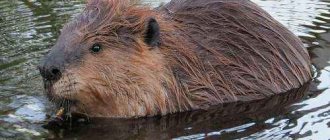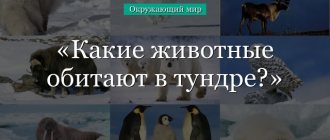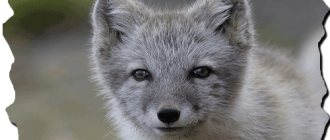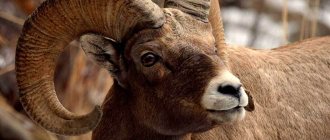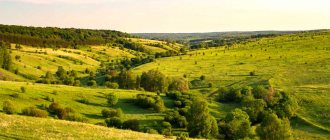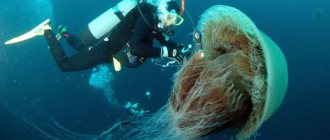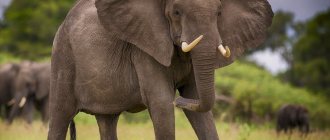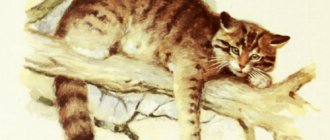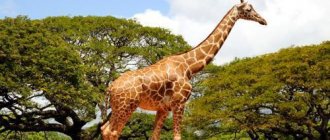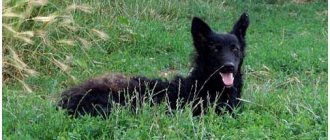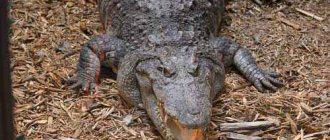Anyone who doesn’t know what taiga looks like is essentially a dense coniferous forest in which moss-covered land is replaced by impassable swamps. The taiga forest is also called boreal forest and is the largest natural zone on the planet, occupying about 17% of the total land area.
Coniferous forests surround the Earth from approximately 50° to 70° northern latitudes. The taiga is also called the “lungs of the planet” because it is responsible for the balance between oxygen and carbon dioxide in the atmosphere.
Geographical position
The natural taiga zone covers northern Canada, Alaska, the Far East, Siberia and northern European countries. The southern tip of coniferous forests occupies the northern part of the United States, Asia, Mongolia and Kazakhstan.
In the north, the taiga borders on the tundra zone, in the south - on mixed and deciduous forests.
Description
The word “taiga” itself comes from the Mongolian language. In 1898, P. N. Krylov was the first to analyze this concept, characterizing the taiga as a closed boreal dark coniferous forest.
The taiga zone is characterized by severe frosts, cool and short summers, and high humidity. Swamps, lakes and rivers are common. This natural zone is not favorable for human life.
Where is it located in Russia
On the map of Russia, the taiga occupies the most extensive territory. It begins in the St. Petersburg region, extends to the Urals, then captures the cities of Novosibirsk, Khabarovsk and Nakhodka.
Boreal forests cover Western and Eastern Siberia and a significant area of the Far East.
History of formation
The relief of the modern taiga zone was formed during the last ice age, 13-14 thousand years ago. When the glaciers retreated, the first trees began to sprout in the liberated territories: first larch and birch, then spruce and pine, and later other conifers appeared.
7-8 thousand years ago, widespread swamping of the territory began. At this time, cedar and pine became widespread. The climate cooling that occurred after this lasted until the end of the first millennium AD. e. At this time, the appearance of modern taiga was formed. Currently, there is a warming trend in the taiga climate.
№4
As noted earlier, this biome has a very short growing season. That is, in fact, only 50-100 days are available for trees to develop. In this region, winter can last more than 6 months and the average temperature is usually around -20 degrees Celsius.
Summers are very short and the average summer temperature is 10 degrees Celsius (although it can rise to 25 degrees Celsius at times).
Types of taiga
According to the type of vegetation, the northern forest can be either light coniferous or dark coniferous.
Dark coniferous
It is more common and is considered the “classic” taiga. The following tree species grow in it: spruce, fir, Siberian cedar. In the southern regions, birch, oak, maple and other deciduous species are added to them.
Light coniferous
Located in Eastern Siberia. Its vegetation is represented mainly by larch, which is the only coniferous tree that sheds its needles for the winter. Larch forests are distinguished by good lighting and the ability to withstand severe frosts.
Roe
An artiodactyl animal of the deer family. Two species of roe deer live in taiga forests: the European roe deer, which only slightly covers the taiga region, and the Siberian roe deer. The habitat mainly depends on the height and duration of the snow cover. The critical height of snow cover for the Siberian roe deer is 50 cm. The Siberian roe deer avoids areas where snow of this height lies for 230-240 days a year. The roe deer enters the taiga only when there is deciduous undergrowth, and mainly lives in mixed forests.
| Roe deer in the winter taiga | Baby roe deer |
As the best feeding areas, it prefers areas of light sparse forest with rich shrubby undergrowth, surrounded by meadows and fields, or (in summer) tall grass meadows overgrown with bushes. It is found in reed fields, in floodplain forests, in overgrown clearings and burnt areas, in overgrown ravines and ravines. Compared to Siberian ones, European roe deer are practically sedentary and do not make mass seasonal migrations. It feeds on plant foods rich in nutrients and water. Young shoots (low in fiber) are most preferred. Dry and highly woody parts of plants, hard grasses and sedges, plants containing toxic substances (saponin, alkaloids, phenols and glucosides) are usually not eaten or eaten reluctantly.
To compensate for the lack of minerals, roe deer visit salt licks or drink water from springs rich in mineral salts. During pregnancy and lactation in females and horn growth in males, the need for minerals increases by 1.5-2 times. Water is obtained mainly from plant foods, but if there are bodies of water nearby, they regularly visit them; In winter they sometimes eat snow. The daily need for water is small and amounts to about 1.5 liters per day.
Relief and climate
The taiga is dominated by flat terrain, but the natural zone also covers mountain systems. In Eurasia, the mountain-taiga relief is represented by the Eastern and Western Sayan Mountains, the Chersky, Verkhoyansky and Suntar-Khayat ridges, and the Sikhote-Alin mountains. In Canada, boreal forests are located in the northern Appalachians, Rocky Mountains and Cordilleras.
The soils of the taiga are not distinguished by fertility and diversity. Due to fallen needles of coniferous trees, the soil composition is oxidized, which also affects its quality.
Main types of taiga soils:
- podzolic, common in places where there is no permafrost;
- gley soils - found in the north of the taiga;
- permafrost-taiga, located in Siberia and the northern part of the Far East.
The soil cover is thin due to extreme cold. Also, the soil in the taiga zone is characterized by permafrost, especially in the northern regions.
Taiga is located in the subarctic and temperate climate zones. Winter is long and harsh, with temperatures below freezing for six months. The western part of the natural zone is characterized by a mild maritime climate with warm winters (-10° C) and cool summers (+10° C). In the east, the climate becomes sharply continental, with long, frosty winters, when the average temperature can reach -40° C, and short, warm summers.
There is a lot of precipitation; on average, it can fall from 200 to 1000 mm per year. At the same time, they do not have time to evaporate, so the taiga abounds in swamps, lakes and rivers.
Wolf
Another animal that lives in the taiga is the wolf. They always gather in flocks. No one has ever met a lone wolf in the taiga. After all, it is very difficult to survive here alone. The flock has a clearly organized hierarchical structure. Even if there is an outcast, he still will not leave, since he cannot survive on his own.
These animals are dangerous to humans in winter, when food is in limited quantities. The ones you should be most afraid of are black wolves. You don’t need a permit to kill this animal; the rangers will even be grateful for such a service. If the animal population in a particular region increases too much, then special extermination raids are carried out. Anyone can take part in such an event.
Water bodies
Due to the considerable amount of rainfall, many deep rivers flow through the boreal forests. Snow, rain and groundwater play an important role in feeding the river system. Among the largest rivers in the natural zone of Russia, the following can be listed: Lena, Ob with its tributary Irtysh, Yenisei, Pechora, Northern Dvina, partially Amur, Indigirka and Kolyma.
The largest lakes are:
- Ladoga;
- Onega;
- Baikal.
The Far East is washed by three seas of the Pacific Ocean: the Bering Sea, the Sea of Okhotsk and the Sea of Japan. To the north are the seas of the Arctic Ocean: Chukchi, Kara, East Siberian, Barents, Laptev Sea, White Sea. To the west is the Atlantic Ocean, the Baltic Sea of which is located in the taiga zone.
A characteristic feature of the boreal forest are numerous swamps. Most of them are located in Western Siberia. Peat bogs are widespread, covered with moss, on which various berry bushes grow.
Protected area
In the taiga, located on the territory of the Russian Federation, there are more than two dozen national reserves. The most famous and largest of them are: Kostamuksha State Reserve, Barguzin State Reserve, Kivach State Reserve, Pinezhsky State Reserve, Pechoro-Ilych State Biosphere Reserve, Kandalaksha State Reserve and others.
Pinega State Reserve
However, there are also reserves where the taiga invades the territories of other countries - Canada, Finland, etc.
Vegetable world
The taiga is characterized by a predominance of coniferous trees. However, the species composition of vegetation in different areas of northern forests varies depending on the type of forest itself (light coniferous or dark coniferous).
In the northern USA and Canada, the flora is represented by:
- American larch;
- Canadian spruce;
- black or stone pine;
- balsam fir.
The following tree species are most common in the light-coniferous forests of Eurasia.
Scots pine
A typical representative of a light coniferous forest. Adapted to different types of climate, very light-loving. Pine wood is used as a raw material for the production of cellulose, plywood, and for various types of carpentry and carpentry work.
Larch
It is resistant to severe frosts and has the ability to shed its needles for the winter. Larch forests occupy vast areas in the eastern part of Russia, in particular in Siberia and the Far East. Larch wood is very dense and is almost not susceptible to rotting.
Dark coniferous taiga is characterized by other types of coniferous trees.
Siberian spruce
The northernmost species of spruce. It can either grow as part of a mixed forest or be a forest-forming plant. Siberian spruce has good resistance to severe frosts and shade tolerance.
Used for construction and timber processing industries.
Siberian cedar
Mainly distributed in Western Siberia. Capable of forming cedar forests or, in other words, cedar. Cedar is frost-resistant, but does not like permafrost in the soil.
This tree is famous for its nuts, which contain many useful substances. In addition, cedar wood is used in carpentry and construction.
Fir
It has characteristic needles with flat, soft needles. Most common in western North America and eastern Asia. Unlike other taiga tree species, it has little frost resistance, with the exception of the Siberian subspecies.
Fir has remarkable medicinal properties; its resin can have an antiseptic effect.
In addition to the division into light and dark types of coniferous forests, the tree composition of taiga forests varies depending on the topography and climate.
More details:
- spruce forests are common in the western part of the taiga;
- in the east - larches;
- The mountain ranges are covered with fir and spruce trees.
Shrubs and shrubs
In addition to tree vegetation, there is also undergrowth in the taiga. It is weakly expressed due to the small amount of light, especially in dark coniferous areas.
However, it is difficult to imagine temperate forests without characteristic plants located in the middle and lower tier of the forest thicket:
- juniper is a common type of shrub that grows almost everywhere in northern latitudes;
- dwarf cedar - is a plant creeping along the ground, mainly growing in the northern regions of Siberia and the Far East on the border of the taiga and tundra;
- currant - grows everywhere in temperate climates, especially common in Eastern Siberia, is very popular as a garden crop;
- cranberry - found mainly in swampy areas in thickets of sphagnum moss;
- blueberry - grows in the form of small shrubs near or on swamps;
- lingonberry - grows in forests with low humidity or in peat bogs;
- sphagnum moss is the most common type of moss found in the taiga and grows in swampy areas.
The herbaceous cover of boreal forests is represented by spring grass, meadowsweet, hogweed, and linnaea. In place of forests cut down by humans, as well as along the banks of rivers, there are meadows that consist of sheep fescue, white grass and winding pike.
Musk deer
These animals have a fairly large habitat - from Eastern Siberia, Sakhalin to the Himalayas, Korea and Tibet. They prefer high terrain and can most often be found at an altitude of 600 to 900 meters above sea level. However, in Tibet and the Himalayas, musk deer live at an altitude of 3 thousand or more meters above sea level. Musk deer usually choose the northern slopes of the mountains, where there are a lot of lichens and no snow crust. In summer it gets closer to mountain rivers, where there is a lot of fresh and lush vegetation in the meadows. In winter, he chooses slopes with pine and cedar groves.
This taiga animal is essentially a deer, but without horns. Its height is 70 centimeters, body length is from 85 to 110 centimeters. Musk deer do not weigh much - from 10 to 17 kilograms. The animal has short front and longer hind legs. The back of his body is powerful, and the front is narrow. Color - brown or brown. A distinctive feature of the animal is the presence of saber-shaped upper fangs in males, which grow throughout life. In females these fangs are vestigial.
The commercial value of musk deer is low. Its fur is of little value, and the skins can, in a pinch, be used to make suede products. However, the animal has glands in the back of its body that secrete natural musk. It is used in the perfume industry and in medicine.
Animals
The fauna of taiga forests is not diverse. Only animals and birds live here that have been able to adapt to the harsh climate. We will talk further about who lives in the taiga.
Brown bear
This huge predator lives throughout almost the entire taiga, from the southern to the northern border of coniferous forests.
His diet includes:
- berries; herbs;
- small rodents;
- fish;
- various ungulates in the spring, when plant food is still insufficient.
The population of brown bears is small and the species is currently endangered.
Wolf
Wolves live in packs with a clearly defined hierarchy. With a well-coordinated hunt, they can kill large herbivores, for example, elk.
The wolf is a kind of “forest orderly” because, first of all, it prefers to kill weak or sick animals. In addition to the taiga, wolves inhabit the tundra, mixed forests, steppes, and mountains.
Lynx
A large representative of the cat family. A characteristic feature of the lynx is long ear tufts and sideburns. It has thick, warm fur that helps overcome severe frosts. Its diet prefers forest birds, hares, roe deer, and moose calves.
Fox
A distinctive feature of this taiga inhabitant is bright red fur and a large fluffy tail. Foxes live in burrows, which they either dig themselves or occupy the empty homes of badgers or arctic foxes. They feed on small rodents, mainly mice.
Elk
The largest herbivore found in northern latitudes. It feeds on leaves, grasses, mosses, and mushrooms. Elk have large, spade-shaped antlers, which they shed during the winter.
Noble deer
The habitat of this representative of artiodactyls is quite large. It inhabits North America, Europe and Asia, preferring various forest areas, including taiga. Feeds on a variety of plant foods.
White hare
It is distinguished by a characteristic change in color: in winter it has pure white fur, in the warm season the fur takes on a brownish-gray tint. Its diet includes various herbs, mushrooms, berries, and in winter it eats tree bark.
Sable
The fur-bearing animal belongs to the mustelidae family and is found, with a few exceptions, only in Russia. The sable prefers to settle in dense dark coniferous forests, in particular pine trees. It feeds mainly on rodents, birds, and sometimes berries and nuts.
Sable fur is very valuable, so its population declined greatly several centuries ago. Now the sable population is recovering thanks to nature reserves and hunting restrictions.
Capercaillie
A large bird from the pheasant family. It lives in coniferous or mixed forests, preferring swamps rich in berries. Its food consists of shoots, nuts, berries, pine needles, and insects.
Wood grouse serve as a very popular hunting target.
Kedrovka
A small bird that lives in coniferous forests, mainly cedar. It lives up to its name by storing pine nuts for future use, thereby promoting the spread of Siberian pine.
In addition to mammals and birds, the taiga is inhabited by numerous rodents (mice, chipmunks, squirrels, beavers), reptiles (common viper), amphibians (Amur frog), as well as numerous mosquitoes and midges, which have the common name midges.
Insects of Siberia
More than a hundred species of different synanthropic non-parasitic insects are found on the territory of the Siberian region, and some species are capable of causing some damage to agriculture, seed funds and food supplies. Moths, beetles, herbivorous moths and grinders are quite widespread.
Hessian fly
The two-winged insect belongs to the mosquito family. The fly, which harms field crops, can destroy many cereal crops, including rye, wheat, barley and oats. The average body length of an adult insect does not exceed 2 mm. The wings have a grayish-smoky color with a pair of longitudinal veins. The legs of the fly are thin and long, reddish in color. The abdomen of males is narrow, cylindrical in shape, while that of females is wider and pointed.
Grasshopper
A relatively large insect, one of the most common representatives of the Orthoptera order. The difference from locusts is the presence of very long antennae. Grasshoppers prefer areas with dense and very tall grass and inhabit fields sown with various cereal crops. The insect is found in steppes with forbs, on the outskirts of forests with the presence of rare trees. Large concentrations of grasshoppers are observed on forest edges and meadows surrounding water bodies.
Leafrollers
Representatives of a special family of butterflies belong to the order Lepidoptera. Leafrollers have bristly or finely ciliated antennae, as well as a rather short and spiral, sometimes underdeveloped proboscis. The wings at rest are folded like a roof, and the upper wings can have an elongated triangular shape. Leafworm caterpillars have sixteen legs and differ from adult individuals by having a body covered with scattered and very sparse hairs.
pine beetles
Representatives of a special group of beetles belonging to the family of bark beetles are quite close to the family Weevils. The length of the cylindrical or oval body of an adult can be 8 mm. Most often, black or brown specimens are found; less often, gray pine beetles with a yellowish pattern can be seen. The insect's head is round, retracted into the region of the chest shield, sometimes with the presence of a rudimentary proboscis.
Moorish bug
The insect, belonging to the order Proboscis, is distinguished by its oblong body shape. The body length of an adult bedbug significantly exceeds its width. On the triangular head there is a pair of complex and small eyes and a pair of ocelli on the parietal region. The antennae are thin, slightly shorter than the head. The front part of the bedbug's back is characterized by the presence of two processes. The front back is wide, slightly convex. The abdomen is wide and flat, consisting of seven segments.
May Khrushchev
A beetle from the Lamellaridae family has a black body 25-30 mm long, with gray hairs and white triangular spots on the sides of the abdomen. The male's antennal club is represented by seven plates. The beetle's elytra are single-colored, reddish-brown in color. The beetle's scutellum is large, semi-oval, smooth and shiny, sometimes with less or more dense punctures and small hairs or scales.
Gadflies
Representatives of a small family of flies that have a hemispherical head with bare eyes. Females have eyes spread quite wide at the back of their heads. The short antennae of males are located in the fossa of the frontal zone and are covered with feathery bristles. The proboscis is large, geniculate, horny, retracted into the mouth opening and invisible from the outside. The body is large in size, wide, with a transverse seam on the back. There are small transverse wrinkles on the wings.
Rye worm
Caterpillar of butterflies belonging to the family of Noctidae or Owlheads. The rye or winter worm has brown-gray or brown-red wing aprons. The hind wings of winter worms are distinguished by their white coloring and dark edges and veins. The antennae of females have bristles, while males have short, feathery antennae. The smooth body of the rye worm is characterized by an earthy-gray, sometimes greenish color.
Sawflies
A representative of a large family of Hymenoptera insects has a body no more than 32 mm long. The head is mobile, wide, hemispherical, with two round eyes on the sides and three simple ocelli on the forehead. The antennae are mostly bristly or filiform. The mouth part for chewing and the body are very well developed. Two pairs of wings are transparent, sometimes smoky in color and non-folding.
Best articles: How many worlds are there in the Universe?
Red Book
Uncontrolled hunting, fishing, as well as uncontrolled deforestation have led to the fact that many animal and plant species have ceased to exist or are on the verge of extinction.
Animals
Due to uncontrolled hunting and environmental pollution, many species of animals are currently listed in the Red Book.
Below are some of them:
- Amur tiger - lives in the Primorsky and Khabarovsk Territories, numbering about 450 individuals;
- Far Eastern leopard - inhabits the south of Primorsky Krai, there are about 50 individuals left in the wild;
- snow leopard - inhabits almost all of Asia, but the number of individuals in Russia does not exceed 100;
- Altai sheep - the largest of all types of sheep, lives in the Altai mountains, the number does not exceed 4000 individuals;
- black stork - lives in the forests of Eurasia, also listed in the Red Book.
In addition to the listed animals, there is a threat of extinction of such species as the Siberian sturgeon, sterlet, tiny shrew, Daurian hedgehog, Tuvan beaver, Barguzin sable and musk deer.
Plants
Despite the diversity of the flora of taiga forests, many plant species are under threat.
These species, listed in the Red Book, cannot be plucked or cut down uncontrollably or completely:
- ginseng - due to its medicinal properties, the species is endangered;
- Baikal anemone is a species of flowering plant that is endangered due to grazing and use for bouquets;
- large-flowered slipper - a herbaceous plant belonging to the Orchid family, has beautiful flowers of a lilac hue, because of which it is subject to extinction;
- petiolate hydrangea - in Russia it grows only on Sakhalin, outside its borders it is found in Japan and on the Korean Peninsula, it is an ornamental plant, and is therefore at risk;
- rhododendron Fori - has the appearance of a shrub or low tree with white flowers, in Russia it lives in the territory of Sikhote-Alin, the number is declining due to fires and collections for decoration.
The condition of rare species is critical, and at any moment they can disappear forever.
Little Bloodsuckers
It is simply impossible to imagine the Siberian taiga without mosquitoes. Sometimes there is no escape from these insects. And the most common of them is the squeak mosquito. These small insects, from 3 to 7 millimeters long, are found everywhere and in large quantities, but their hordes are especially huge near water bodies. The male squeak mosquito is absolutely harmless and feeds only on plant juices. But for the development of eggs, the female must feed on the blood of mammals - she is quite happy with human blood. And she attacks without hesitation!
Which animal is called the queen of the Siberian forests?
This is what the lynx is called for its beauty, flexibility, grace and natural strength. This predator is accustomed to frost and lives even beyond the Arctic Circle. It feeds on many animals, lying in wait for them and then suddenly attacking them. The lynx has very acute vision, which allows it to look out for prey from a long distance. And this wild cat’s sense of smell is so perfect that it can smell prey or danger several kilometers away.
Share link
Winter climate
The taiga forests have a very harsh climate, characterized by cold, long winters. In winter, temperatures can drop to -50° C, and the snow cover is deep and loose.
Many animals that live in the taiga have learned to adapt to harsh conditions. For example, during the winter, animals grow thick fur and change color. Some birds fly south in winter.
People also settle in the northern forests: indigenous peoples engaged in hunting and reindeer herding, residents of towns and villages, as well as scientists, geologists, rangers and other people who, for one reason or another, have abandoned the benefits of civilization.
Those who live in harsh climates settle in so-called tents made from animal skins (indigenous peoples). Others live in wooden log cabins and engage in folk crafts. Workers or scientists live in cordons - small towns where residents receive everything they need at special bases.
Taiga birds
The taiga is inhabited by owls, black woodpeckers, and grouse birds - wood grouse, hazel grouse, quail, and partridge. All grouse spend the night in the snow in winter, “falling” there from the lower branches. Burying themselves in the snow, they escape the frost.
Rice. 3. Capercaillie bird.
The goldeneye duck makes nests in tree hollows at a height of up to 8-10 m. The nutcracker feeds and stores nuts for future use, helping the spread of cedars.
In addition to them, there are birds common to forests here - tits, nightingales, waxwings and others, flying to warmer regions for the winter.
Reserves
To preserve natural ecosystems and restore the number of rare animals, special institutions called nature reserves are created. There are 13 environmental complexes in the taiga zone of Russia: 8 of them are located in the European part of the country and 5 in the east, in the Asian part.
Listed below are the most famous reserves in which activities to protect taiga nature are carried out:
- Barguzinsky. The oldest reserve in Russia, created in 1916 to restore the population of sable, as well as some species of birds, plants and Siberian sturgeon. Located in Transbaikalia.
- Kuznetsky Alatau. Located in the Kemerovo region, created in 1989. It is home to rare animals, such as the black stork, shrew and Altai mole, as well as plants - alpine arcticus, northern bramble, etc.
- Ussuri. Created in 1934, it protects such mammals as the Amur tiger, red wolf, giant shrew and leopard. Located in Primorye.
- Lazovsky. Founded in 1935. Many plants, mushrooms, insects, birds, and mammals, including the Sakhalin musk deer, are protected here.
- Central Siberian. Founded in 1985, this reserve is dedicated to preserving the integrity of nature near the Yenisei, including its tributaries. The Siberian sturgeon, sterlet, some plants and birds are under its protection.
- Pillars. Date of creation: 1925. It got its name thanks to the famous array of rocks in the shape of pillars. Several species of plants, lichens, mushrooms, birds and fish are protected here.
We can conclude that the reserves provide invaluable assistance to the fauna and flora of the taiga, maintaining the number of rare and unique species.
The largest forest
In fact, the taiga is one large forest area stretching for 11 thousand kilometers. And the total area of the taiga is more than 15 million square kilometers . It can be said without exaggeration that this is the largest forest on the planet. The taiga accounts for about a third of all forest areas on the planet.
Interesting Facts
Taiga is a unique natural phenomenon. Animals and birds live here that are not found anywhere else in the world. Despite the fact that work is underway to study this natural area, boreal forests remain one of the most mysterious corners of the planet.
A list of the most interesting facts about the taiga zone is presented below:
- the length of the taiga zone in Eurasia is 2 thousand km, and in North America - about 1500;
- the record low winter temperature was -54° C, and the highest summer temperature was +35° C;
- nowhere in the world are there so many fur-bearing animals;
- the taiga is home to more than 300 species of birds and about 800 varieties of flowers;
- this is the northernmost forest zone;
- taiga forests help maintain the balance of oxygen and carbon dioxide in the atmosphere.
Thus, the taiga is a unique biological system, and man’s task is to preserve and take care of the plants and inhabitants of this forest zone.
Reptiles
Up to 70 species of various reptiles live in the vastness of Russia.
Common viper
Common viper
This poisonous snake lives over a vast territory - starting from the cold shores of England, moving to the expanses of France, and from there to the very Pacific coast of Russia. Although the snake looks angry and aggressive, it is actually very shy and timid. The snake has a distinct zigzag black pattern that runs throughout its body. It grows to an average length of 60 centimeters and weighs an average of 120 grams.
The diet consists of small mammals, lizards, birds, spiders and worms. The common viper is found in meadows, forests, swamps, sandy semi-deserts and on the shores of lakes. Despite the constant destruction of natural habitats, the snake continues to find new places where it develops and maintains its population.
Caucasian agama
Caucasian agama
The Caucasian dragon (Paralaudakia caucasia) is a species of lizard native to Turkey, Russia, Iraq, Iran, Afghanistan and Pakistan. It grows to an average length of 15 centimeters and weighs about 90 grams. Inhabits mainly deserts, shrubs and mountain meadows. It feeds on insects, small vertebrates, berries and flower buds. There is little information about the lizard population and therefore further research is needed to more accurately analyze this remarkable species.
